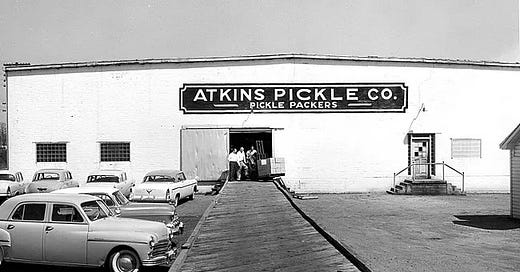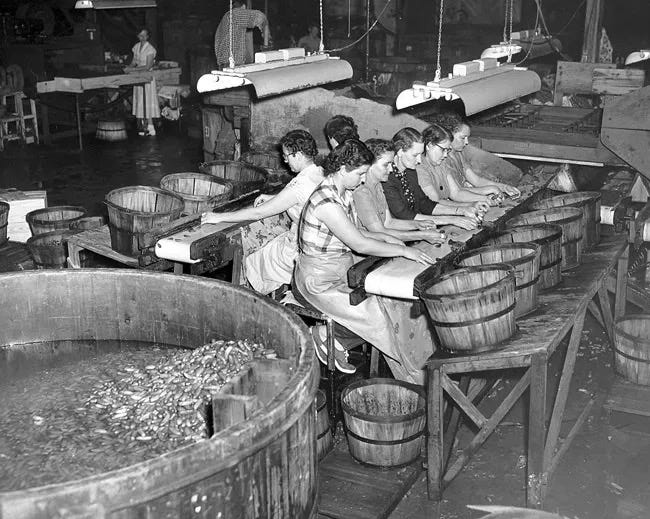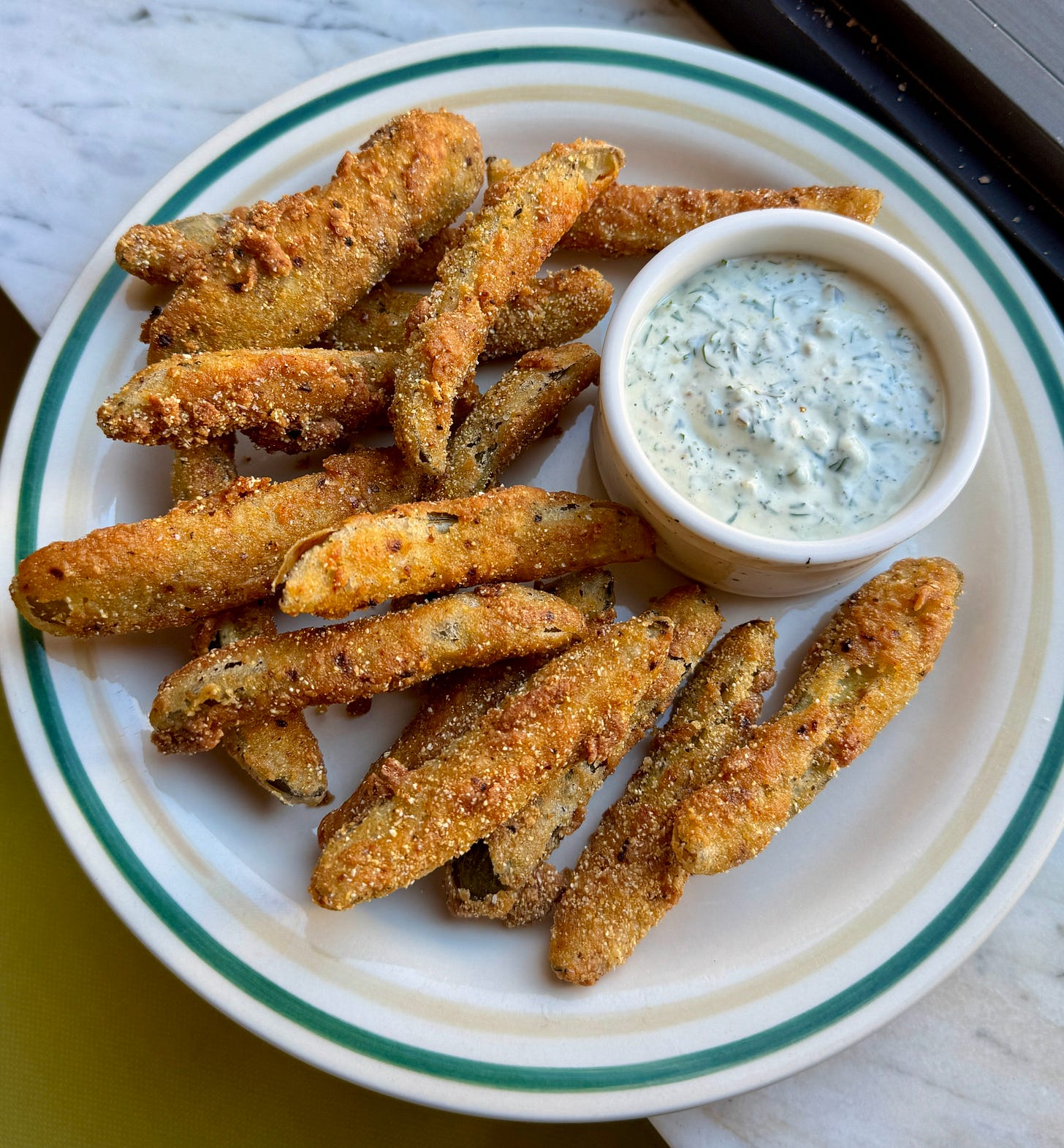In 1960, Bernell “Fatman” Austin, fresh out of the Navy where he had served as a cook, settled in Atkins, Arkansas. There, he opened the Duchess Drive-In, a restaurant located across the highway from the Atkins Pickle Company. Founded in 1946, the company had become one of the largest pickle producers in the region, cultivating 1,200 acres of cucumbers and manufacturing millions of pickles each year. Bernell catered to the many workers at the company on their lunches and naturally, had a lot of pickles at his disposal.
So in the summer of 1963, Bernell fried his first batch of dredged hamburger pickles, selling them for 15 cents and serving them with ketchup. By the end of that summer, he perfected the dish, opting for wedges of whole pickles quartered lengthwise and dredged in seasoned flour—a recipe his family continues to safeguard to this day. And quickly, the fried pickle gospel spread, inspiring many copycats throughout the region and cementing the fried pickle as an American classic alongside Buffalo wings and pimento cheese.
By the summer of 1963, Bernell was looking for a way to drum up business for his roadside restaurant. Searching for a unique gimmick, he naturally turned to the local pickles. His initial experiments with sliced hamburger pickles didn’t fully convince him. After a summer of testing, he finally landed on his iconic shape and his now world-famous secret dredge.
Although the Atkins Pickle Company closed its doors in 2002, and Bernell passed away in 1999, you can still taste his original fried pickles at the Atkins Pickle Festival, held every year in downtown Atkins on the third weekend in May.
The key to achieving a perfectly crispy dill pickle is allowing the dredged pickle to rest, hydrating the breading. The process is straightforward: Mix all the dry ingredients in one bowl, all the wet ingredients in another, then coat the pickles by dipping them in the dry mixture, followed by the wet, and then back into the dry. Let the coated pickles sit for at least an hour—although Bernell would insist on leaving them overnight. This helps release any excess moisture from the pickle and fully set the breading.
Below is my interpretation of the classic fried dill pickle along with two of my favorite sauces to eat them with.








